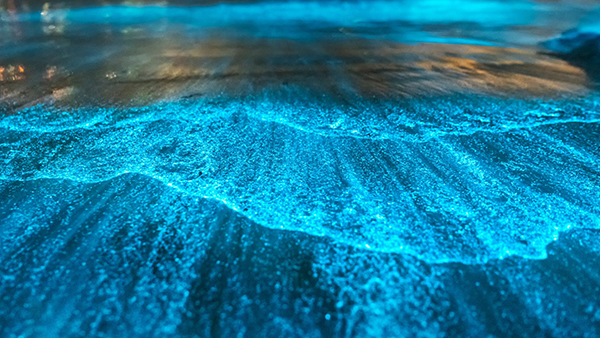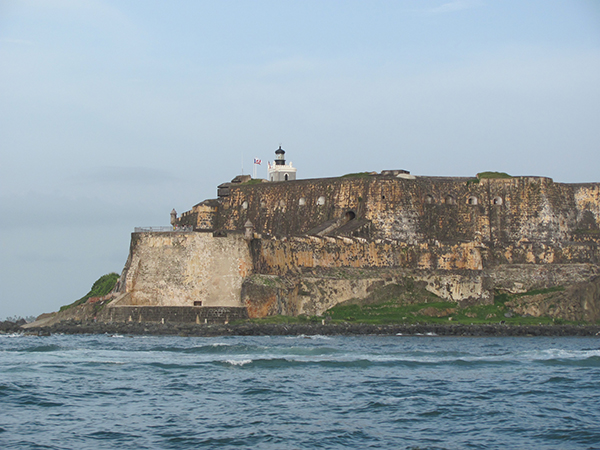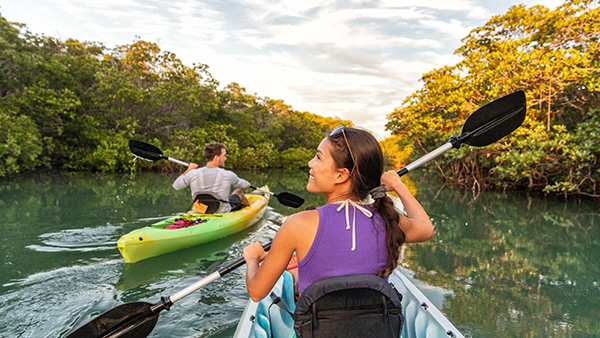Bioluminescence is one of the great charms of the ocean. To children, it might as well be magic. Even to adults who understand the processes that make it possible, bioluminescence remains mysterious and alluring.
You can find organisms that light up the oceans all over the world. The assorted blues, greens and neons that float by make a night fishing offshore that much more enchanting. Swordfishing trips and overnighters are brightened by all manner of bioluminescent creatures from the deep.
Bioluminescence results from chemical reactions within specialized organisms. It can be produced by both plants and animals. This natural broadcasting of
light is used as a means of communication in low light conditions—both at night and during the day within reaches of the ocean that are deeper than sunlight’s penetration.

Bioluminescence Jervis Bay, Australia. Getty Images.
There are places around the world where bioluminescent aggregations are particularly powerful, consistent and accessible. In many of these locations, lodges, tours and excursions make it possible for visitors to experience bioluminescence for themselves. What follows is a rundown of a few bioluminescent destinations that are particularly captivating.
The options and experiences they provide range widely. Many involve kayaking or paddle boarding into protected bays or mangrove areas. Others involve swimming into waters that light up as you pass through them. All of these experiences take place at night (some leave around sunset, others later). The seasonality of the experiences—and the best time to go—varies by location.
Which location is best for you depends largely on the type of experience you wish to enjoy—and what types of things you can do in the area where it exists. Our rundown includes locations within the United States and the Caribbean. You can also find plenty of other bioluminescent destinations in Australia, southeast Asia and around the world.
Mosquito Bay. Vieques Island, Puerto Rico
Puerto Rico is home to three well known bioluminescent hotspots. Perhaps the most famous is Mosquito Bay on Vieques Island. The Guiness Book of World Records proclaims this as the world’s brightest bioluminescent bay.
According to the Guiness Book of World Records, Mosquito Bay hosts as many as 700,000 dinoflagellates (microscopic algae) per gallon of sea water. When agitated these dinoflagellates emit blue-green light for 1/10th of a second (this short radiance is part of the reason that capturing good, high-quality photos of bioluminescence is so difficult). Mosquito Bay has a narrow opening that protects the algae from being flushed into the ocean. The mangroves that line the bay provide plenty of food for this light-producing algae, creating a naturally occurring fireworks show.

El Morro Fortress, San Juan, Puerto Rico. Elliott Stark.
You can fly directly into Vieques or take a two-hour ferry ride from San Juan. Puerto Rico is a magical place that offers great fishing and tourism opportunities.
Luminous Lagoon. Falmouth, Jamaica
The Luminous Lagoon is home to millions of dinoflagellates that shine brightly enough to have given the place its name. Located in the port city of Falmouth on Jamaica’s north coast, the Luminous Lagoon is home to Glistening Waters Marina. The facility provides accommodation, lagoon tours and has a restaurant on site. The lagoon is wide and shallow. Many of the tour options are by boat and swimming is encouraged. When the dinoflagellates are disturbed, they emit light. This lagoon is widely recognized as one of the brightest bioluminescent displays around… and it’s named accordingly.
Indian River Lagoon. Central Florida
Florida’s Space Coast is home to one of the most prominent bioluminescent destinations in the United States. In 2022, National Geographic® proclaimed this region as among the most reliably occurring bioluminescence in the country. Bioluminescent displays take place year-round here. Peak season runs from perhaps June through October or so, July and August being particularly good. From early summer through late fall, it is dinoflagellates (the single celled algae) that emit light. From about the start of December through late spring, comb jellies light up the water. Don’t worry, comb jellies do not sting.
The tour options here include kayaks and stand-up paddle boards. Spending time on the water in this part of the world brings with it the chance to see manatees. The fishing for speckled trout and redfish in the Indian River Lagoon can be excellent. You could likewise package a bioluminescent tour as part of a vacation that includes Orlando-based attractions (a 45-minute drive) or watching a launch at the Kennedy Space Center.

Kayakers in mangroves.
Rum Point, Grand Cayman. The Cayman Islands
Cayman Kayaks offers a variety of bioluminescent experiences in this wonderful part of the Caribbean. The company runs tours during the dark phases of the moon. When the skies are clear, the experience combines watching marine organisms brighten the dark waters below while star gazing at the Milky Way above. The tours are led by naturalists who explain the processes that make bioluminescence happen.
Lifestyle / POSTED 05-Apr-2024;
